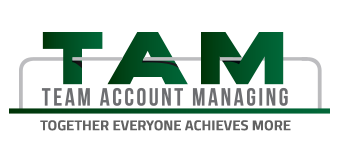Why AI Doesn’t Mean Taking The ‘Human’ Out Of Human Resources
Artificial intelligence, commonly known as “AI,” is a popular buzzword these days. Some of us hear the term AI and picture of a dystopian future where people lose jobs and control to robots who possess artificial — and superior — intelligence to human beings. Others are more sanguine about our ability to control and harness technology to achieve more and greater things.
While it’s impossible to predict how exactly AI technology and capabilities will evolve, the fact of the matter is that AI is no futuristic science fiction; it is here today in many forms and manifestations. And AI exists in areas you may not necessarily think it does — such as in HR departments where the technology actually helps place people in jobs rather than make them redundant.
I recently spoke to Brett McCoy, head of Employer Brand and Recruitment Marketing Strategy at Alexander Mann Solutions, a leading recruitment process outsourcing company. He explained how his firm offers AI solutions to solve human resources challenges and problems.
McCoy told me, “My colleagues and I believe that AI, when applied properly and under the proper strategy, will deliver candidates an exceptional experience [and help ensure] hiring managers they are getting the best [job candidates]…AI, and automation in general, should not simply be looked at as a replacement for people in the hiring process, but instead, [as helping to] move people (recruiters) from repetitive tasks to having more candidate conversations and building long term candidate relationships.”
In short, McCoy believes that AI is a tool that more companies could put into place to help them (a) automate repetitive and mundane aspects of the recruiting process, (b) improve the job candidate experience and (c) improve the candidate application experience, in part by reducing bias during the recruiting process. He gave me three examples of how Alexander Mann’s clients leverage AI technology today to do just that.
Today, applicant tracking software (ATS) helps alleviate the burden of a talent acquisition professional having to look through every single resume. Users of ATS systems can search through vast amounts of resumes and applicant data by keyword, education, location and years of experience. However, as any internet user knows, even a very good search engine doesn’t necessarily make you confident that you’re seeing the most relevant search results.
This is where AI comes in. Using machine learning technology, employers can feed a system teaching sets and information about who the top current employees are for a given open position, providing resumes of top existing performers, their backgrounds and career paths. Resume sifting with an AI layer means that candidates matching certain criteria (e.g. location and previous job title) can be ranked and presented to a recruiter based on other desired traits or backgrounds that match top performers among current employees.
The implication, of course, is that there is a potentially much better outcome for the hiring manager and employer in terms of candidate fit. While a human being would still meet and interview highly ranked, suggested candidates, it’s clear that this kind of technology could make the recruiting process much more efficient and successful.
